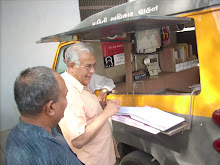Deccan Herald: Bangalore: Wednesday, 21 August 2024.
Information obtained by DH under the RTI Act shows that 60 mining projects were approved in four districts between 2010 and March 2024.
After losing 2,200 acres of forests when illegal mining was rampant, the four districts at the epicentre of the scam have lost a whopping 4,228.81 acres of forest in the last 14 years with the undivided Ballari district bearing the brunt, accounting for the loss of 3,338.13 acres or 80 per cent of forest.
Information obtained by DH under the RTI Act shows that 60 mining projects were approved in four districts between 2010 and March 2024. Ballari led the list with 39 projects, with the remaining shared by Chitradurga and Tumakuru. In addition, mining leases were extended or renewed for at least 5,000 acres of forest during the same period.
Following a Supreme Court order, the Indian Council of Forestry Research and Education (ICFRE) conducted a macro analysis and found that 8.9 sq km (2,199.24 acres) of forest were destroyed between 2000 and 2011. It said mining activities had hit 43.4 sq km (10,724 acres) of land.
Back in 2013, the Supreme Court took note of the findings by experts that “Egyptian vulture, yellow-throated bulbul, white-backed vulture and four-horned antelopes have vanished due to depletion of the forest cover on account of mining” and gave directions that led to “stringent” norms.
However, an official aid legalised mining had destroyed twice the extent of forests that illegal mining had ravaged. “We are seeing legalised destruction. The results of the havoc are all too visible in Sandur if one cares to look at the impact on the wildlife and the life and livelihood of the people,” he said.
The impact on people was revealed by a study by the Hyderabad-based Cerana Foundation, commissioned by Samaja Parivartana Samudaya that took the illegal mining case to the Supreme Court. The foundation found a “four-fold increase” in the prevalence of asthma in areas exposed to air pollution caused by mining.
It also cost losses to agriculture income estimated at Rs 200 crore a year, carbon sequestration cost of Rs 120 crore.
The study noted that iron ore production emits an average of Rs 25 kg of carbon dioxide per tonne. To sequester the carbon emissions in 2011, plantations have to be raised on 98,842.15 acres ( 400 sq km). “If plantations were to be raised on 400 sq km to sequester CO2 emissions from iron ore mining in Sandur taluk, it would cost Rs 120 crore, which is the extent to which the iron ore industry has been subsidised by the environment,” it said.
S R Hiremath of SPS noted that the atrocity against nature had prompted the Supreme Court to set up a special purpose vehicle for rehabilitation and restoration work in the three districts (now four).
“On the one hand, we are budgeting Rs 26,000 crore for restoration. On the other hand, the government is allowing the destruction of more forests, including virgin forests. This year alone, extreme weather events caused by climate change have taken hundreds of lives. We need to wake up at least now,” he said.
Further, Hiremath pointed to the need to adopt the principle of intergenerational equity. “At this rate of extraction, mineral deposits in Ballari may last for 25-30 years. Doesn’t the future generations have a say in the utilisation of resources, not to mention the conservation of the forests,” he asked.
Information obtained by DH under the RTI Act shows that 60 mining projects were approved in four districts between 2010 and March 2024.
After losing 2,200 acres of forests when illegal mining was rampant, the four districts at the epicentre of the scam have lost a whopping 4,228.81 acres of forest in the last 14 years with the undivided Ballari district bearing the brunt, accounting for the loss of 3,338.13 acres or 80 per cent of forest.
Information obtained by DH under the RTI Act shows that 60 mining projects were approved in four districts between 2010 and March 2024. Ballari led the list with 39 projects, with the remaining shared by Chitradurga and Tumakuru. In addition, mining leases were extended or renewed for at least 5,000 acres of forest during the same period.
Following a Supreme Court order, the Indian Council of Forestry Research and Education (ICFRE) conducted a macro analysis and found that 8.9 sq km (2,199.24 acres) of forest were destroyed between 2000 and 2011. It said mining activities had hit 43.4 sq km (10,724 acres) of land.
Back in 2013, the Supreme Court took note of the findings by experts that “Egyptian vulture, yellow-throated bulbul, white-backed vulture and four-horned antelopes have vanished due to depletion of the forest cover on account of mining” and gave directions that led to “stringent” norms.
However, an official aid legalised mining had destroyed twice the extent of forests that illegal mining had ravaged. “We are seeing legalised destruction. The results of the havoc are all too visible in Sandur if one cares to look at the impact on the wildlife and the life and livelihood of the people,” he said.
The impact on people was revealed by a study by the Hyderabad-based Cerana Foundation, commissioned by Samaja Parivartana Samudaya that took the illegal mining case to the Supreme Court. The foundation found a “four-fold increase” in the prevalence of asthma in areas exposed to air pollution caused by mining.
It also cost losses to agriculture income estimated at Rs 200 crore a year, carbon sequestration cost of Rs 120 crore.
The study noted that iron ore production emits an average of Rs 25 kg of carbon dioxide per tonne. To sequester the carbon emissions in 2011, plantations have to be raised on 98,842.15 acres ( 400 sq km). “If plantations were to be raised on 400 sq km to sequester CO2 emissions from iron ore mining in Sandur taluk, it would cost Rs 120 crore, which is the extent to which the iron ore industry has been subsidised by the environment,” it said.
S R Hiremath of SPS noted that the atrocity against nature had prompted the Supreme Court to set up a special purpose vehicle for rehabilitation and restoration work in the three districts (now four).
“On the one hand, we are budgeting Rs 26,000 crore for restoration. On the other hand, the government is allowing the destruction of more forests, including virgin forests. This year alone, extreme weather events caused by climate change have taken hundreds of lives. We need to wake up at least now,” he said.
Further, Hiremath pointed to the need to adopt the principle of intergenerational equity. “At this rate of extraction, mineral deposits in Ballari may last for 25-30 years. Doesn’t the future generations have a say in the utilisation of resources, not to mention the conservation of the forests,” he asked.















































































